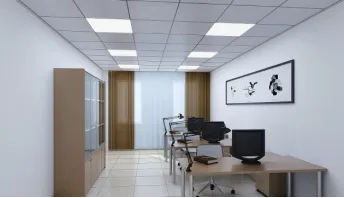Nov . 08, 2024 18:27 Back to list
access panel in ceiling
Access Panels in Ceilings An Overview
Access panels in ceilings play a crucial role in modern building design and maintenance. These clever installations provide easy access to hidden systems and spaces above the ceiling line, facilitating maintenance and inspections of electrical wiring, plumbing, and HVAC systems without the need for extensive demolition or disruption of the interior space. In this article, we will explore the various types of access panels, their benefits, installation considerations, and the best practices for their use.
What are Access Panels?
Access panels are removable panels that allow entry to concealed areas within a building. In ceilings, they enable access to mechanical, electrical, and plumbing (MEP) systems that run above the finished ceiling. They come in various materials, sizes, and designs, catering to both functional and aesthetic needs.
Types of Access Panels
1. Standard Access Panels Typically made from lightweight materials like plastic or metal, these panels offer basic access to ceiling spaces. They are often used in residential settings for areas such as attics or between floor levels.
2. Fire Rated Access Panels These specialized panels are designed to maintain fire separation between different areas of a building. They are constructed from materials that can withstand high temperatures and are essential for compliance with building codes in commercial and industrial settings.
3. Acoustic Access Panels When sound attenuation is a priority, acoustic panels come into play. These panels are designed to absorb sound, making them ideal for spaces where noise reduction is important, such as offices or conference rooms.
4. Access Doors for Ductwork These panels are specifically designed for access to HVAC systems. They allow for maintenance and repairs of ductwork without disrupting the aesthetics of the ceiling.
Benefits of Access Panels
1. Ease of Maintenance The primary advantage of access panels is the ease with which they allow maintenance personnel to reach plumbing, electrical, and air conditioning components. This accessibility can reduce downtime and maintain operational efficiency.
2. Cost-Effective Solution Rather than closing off a section of the ceiling or an entire room for access, an access panel provides a cost-effective solution to reach essential systems. This can save significant labor costs and time associated with larger renovations.
3. Design Flexibility Modern access panels come in a variety of designs and finishes, allowing them to blend seamlessly into the ceiling or act as a design feature. This flexibility helps maintain the overall aesthetic of a space while providing functionality.
access panel in ceiling

4. Enhanced Safety By providing clear points of access for maintenance, access panels help ensure that maintenance work can be performed safely. This reduces the risk of accidental damage to the ceiling or the systems hidden above it.
Installation Considerations
When installing access panels in ceilings, several factors must be taken into account
1. Location The placement of an access panel should be strategic, allowing for easy access to critical mechanical systems while being out of the way of daily activities.
2. Size The size of the access panel should be proportional to the systems it services. A panel too small may not provide adequate access, while one too large could be unsightly.
3. Building Codes Compliance with local building codes is essential. This includes ensuring that fire-rated panels are installed in the appropriate locations and that all electrical codes are met.
4. Sealing and Insulation It’s crucial to ensure that access panels are properly sealed to prevent air leaks. Insulation should also be considered to maintain energy efficiency and comfort within the building.
Best Practices for Use
To ensure optimal performance and longevity, follow these best practices
- Regularly check access panels for signs of wear or damage. - Maintain clear labeling of panels for easy identification of their purpose. - Schedule routine inspections of MEP systems accessed via panels to anticipate any required maintenance.
Conclusion
Access panels in ceilings are indispensable components of modern building management and maintenance. Providing a practical solution for accessing essential systems without extensive disruption, they enhance both functionality and safety. By understanding the types, benefits, and installation considerations of access panels, building owners and managers can ensure their effective use, ultimately contributing to the longevity and efficiency of their facilities.
-
Durable Ceiling T Grid Systems | Easy InstallationNewsAug.29,2025
-
PVC Gypsum Ceiling: Durable, Laminated Tiles for Modern SpacesNewsAug.28,2025
-
Pvc Gypsum Ceiling Is DurableNewsAug.21,2025
-
Mineral Fiber Board Is DurableNewsAug.21,2025
-
Ceiling Tile Clip Reusable DesignNewsAug.21,2025
-
Ceiling T Grid Modular DesignNewsAug.21,2025







